The Aesthetics of Contemporary Animation: Melding 2D & 3D Techniques
Since the first Toy Story (1995) much modern animation has been created utilising 3D techniques. In this blog, Miguel Mira explores how two recent animations, Spider-Man: Into the Spider-Verse (2018) and Arcane (2021), utilise both 2D and 3D capabilities to generate a new aesthetic sensibility.
Animation is a medium that was profoundly impacted by the digital revolution, both practically and aesthetically. In practice, the new affordances of computer technology negated crucial steps of the animation production pipeline. Because of computers, animators no longer have to painstakingly hand-draw every single frame. They can now rely on computer technology to create a character model to navigate the in-between frames. This is done by employing a modeler, which creates a 3D character digitally. To move said character, a rigger creates a “skeleton” that an animator then operates and sets key poses. Obviously if we alter the means of production we will also alter the final product, and ever since the transition to 3D technology animation aesthetics have strived towards a “naturalistic” look. As an example cinematographers Jean-Claude Kalache and Patrick Lin create a split diopter effect (traditionally an effect created with live action camera lenses) to grant a grounded and life-like look to the 3D dolls of Toy Story 4 (2018).
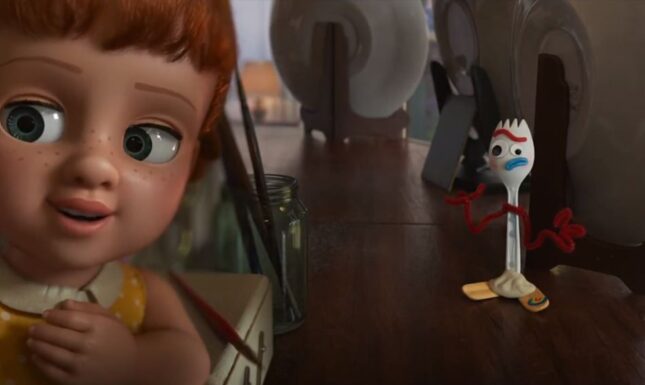
However, Into the Spider-Verse (ItSV) and Arcane refuse a naturalistic look in favour of using 2D techniques in conjunction with 3D models to create extraordinarily stylised visual effects. Visual Effects Supervisor, Danny Dimian, stated in an interview to WIRED “we wanted to stay away from things that were soft or did not look like it belonged in the illustrated world” (Dimian, 2019, 0:47). This inspiration made ItSV’s aesthetics an homage to graphic novels: “we did know what our inspiration was, we all loved comic books” (Dimian, 2019, 0:21). For this effort 177 animators worked diligently to create a stylised visual language that employed: the flipping of pages to transition between scenes, the division of the frame into panels to present multiple scenarios at once, the usage of onomatopoeias and speech bubbles to reinforce audio queues, splicing in hand-drawn pop frames and even ingeniously using half tones, ink misprints and Kirby dots (a traditional comic book aesthetic) to bring certain areas of the frame in and out of focus.
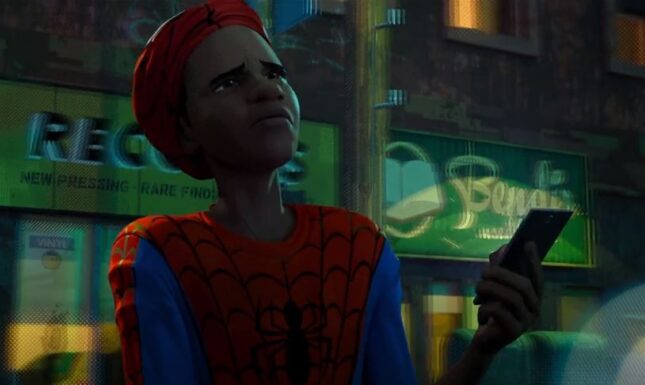
But perhaps the most ingenious technique of this film is adding form lines to the character’s faces. The effects team, in conjunction with the character designers, created a machine learning AI that overlaid lines on character’s brows, noses and cheeks based on a preexisting library of drawings: a process that involved correcting the AI repeatedly. This arduous task reinforced the emotional punch of the character’s facial expressions.
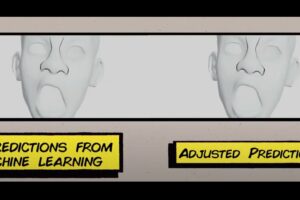

Sony Pictures Animation obviously demonstrated an immense amount of dedication to honour comic book visuals. The detail poured into every single frame astounded both audience and critics alike and garnered the film the Oscar for Best Animated Feature in 2018, breaking Disney’s 6 year winning streak and inadvertently rediscovering animation’s greatest strength: stylisation.
Arcane is also an ultra-stylised animated series that melds flat 2D techniques with 3D character models to great effect. Because Arcane is based on the popular video game League of Legends, French animation studio Fortiche sets out to create a magical steampunk visual. Fortiche utilises 3D character models, as is common practice, yet deviates from the contemporary formula by creating minuscule and massive elements in flat 2D. Props such as the brushing of dust off a book, explosions up close and in the distance, stroke lines over punches and kicks that help sell the impact of strikes, wine being poured from a glass, and entire background sets, are all hand drawn in 2D. This creates a fantastical aesthetic because the 3D characters inhabit a drawn 2D world almost seamlessly. Fortiche accomplishes this by lighting the characters and compositing them into the scenes with an extraordinary attention to colour theory by casting shadows, and overlaying particle simulations that strength the illusion of the characters inhabiting the cities of Zaun and Piltover.
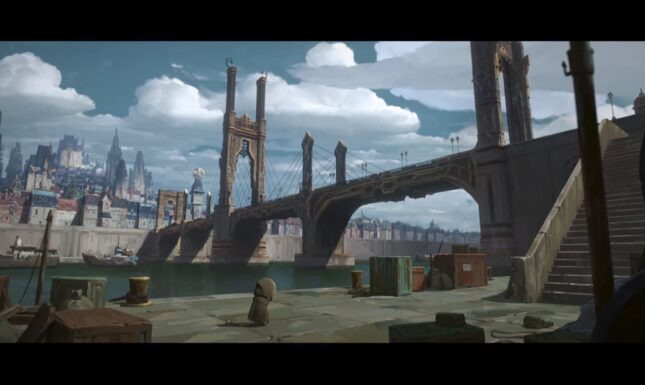
However, directors Pascal Charrue and Arnaud Delord chose to reveal the “seams” when we are shown the psychotic transition of protagonist Powder into the villainous Jinx. To represent her descent into madness stroke lines are overlaid atop the 3D character models and the surrounding frame to visually demonstrate her split personality. Again, using 2D stylisation to illustrate effectively major plot points for the character’s deteriorating psyche. In an interview to Allociné L’émission director Delord pondered: “how can we do something original and at the same time unique and artistic? Et voilà! (…) we had a thousand different tones for the pilot, but we opted for something more mature and more serious. The fantasy is eclipsed by the dramaturgy of the character” (Delord, 2021, 1:03:47, Translated from French to English).
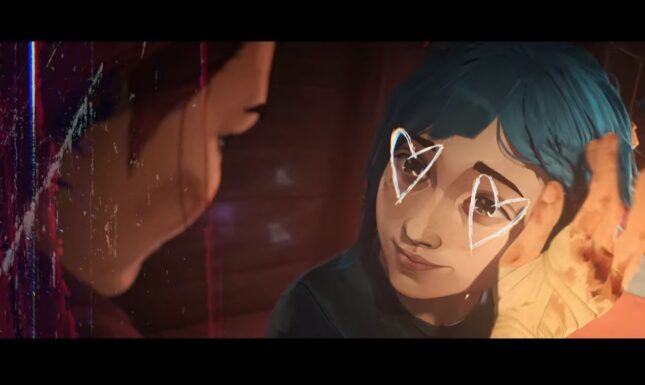
Stylising the 3D characters into inhabiting a 2D world is part of the reason why Arcane holds a 9.1 score on IMDB (making it the 21st best rated show on the website), holds a perfect 100% score on Rotten Tomatoes and has been nominated in 9 different categories for the Annie Awards to be held on March 12th 2022.
Both ItSV and Arcane prove that animation does not need to strive for a natural aesthetic language to succeed. In fact, quite the contrary. If animation opts for style over naturalism it gains an expressive visual language that is unique to the medium. By utilising both 2D and 3D techniques in conjunction, contemporary animation can create dazzling results. Both audience and critical reception for the two animations was so positive that both animation studios Sony Pictures Animations and Fortiche are currently working on sequels. The sequel to ItSV, Spider-Man: Across the Spider-Verse is scheduled to premiere October 7th 2022, and the second season of Arcane will be available in 2023. It seems contemporary animation has found an aesthetic language that both employs the affordances of 3D computer technology and the stylisation of 2D, differentiating it from the naturalism of live action cinema that it has tried to emulate for so long. Regarding contemporary animation, in the words of Vi to her little sister Powder: “You know, Powder, what makes you different makes you strong. Always remember that, okay?” - Arcane: Season 01Episode 02 Some Mysteries Are Better Left Unsolved, 34:16.
References and Further Reading:
Videos:
Insider. (21/02/2019) How 'Spider-Man: Into The Spider-Verse' Was Animated [Video]. YouTube. https://youtu.be/jEXUG_vN540
League of Legends. (11/06/2021) /dev diary: Arcane Animated Series [Video]. YouTube. https://youtu.be/5m6mstnf-2E
League of Legends. (31/10/2021) /dev diary: World of Arcane [Video]. YouTube. https://youtu.be/D9NoXdWn10s
League of Legends. (22/11/2021) Arcane: Season 2 Announcement [Video]. YouTube.
LeStream Replay. (17/11/2021) ARCANE et GERMINAL : le SAVOIR-FAIRE Français à l'honneur | ALLOCINÉ L'ÉMISSION #76 [Video]. YouTube. https://youtu.be/3fsnZ4NfiKQ
NerdWriter1 a.k.a Evan Puschak. (02/10/2019) The Real Fake Cameras of Toy Story 4 [Video]. YouTube. https://youtu.be/AcZ2OY5-TeM
Sony Pictures Animation. (13/03/2019) Telling a Story in Every Frame [Video]. YouTube. https://youtu.be/1Nw_c_CqPso
Sony Pictures Entertainment. (05/12/2021) SPIDER-MAN: ACROSS THE SPIDER-VERSE (PART ONE) – First Look [Video]. YouTube. https://youtu.be/BbXJ3_AQE_o
Sony Pictures Entertainment. (17/02/2019) SPIDER-MAN: INTO THE SPIDER-VERSE – Embracing Imperfection [Video]. YouTube. https://youtu.be/vDjvhwgbsP8
STREAM WARS. (20/11/2021) Making Of ARCANE - Best Of Behind The Scenes | League Of Legends | Netflix Original Series (2021) [Video]. YouTube. https://youtu.be/7rAbZUZCnL8
WIRED. (22/03/2019) How Animators Created the Spider-Verse [Video]. YouTube. https://youtu.be/l-wUKu_V2Lk
Websites:
Arcane: League of legends. Rotten Tomatoes. (n.d.). Retrieved February 15, 2022, from https://www.rottentomatoes.com...
IMDb.com. (2021, November 6). Arcane. IMDb. Retrieved February 15, 2022, from https://www.imdb.com/title/tt1...
Wit, A. D. de. (2022, January 12). Annie Award nominations: Netflix scores 51 nominations. 'arcane,' 'the Mitchells vs. the machines,' and 'maya and the three' lead for the Streamer. Cartoon Brew. Retrieved February 15, 2022, from https://www.cartoonbrew.com/fe...
© Miguel Mira and Leiden Arts in Society Blog, 2022. Unauthorised use and/or duplication of this material without express and written permission from this site’s author and/or owner is strictly prohibited. Excerpts and links may be used, provided that full and clear credit is given to Miguel Mira and Leiden Arts in Society Blog with appropriate and specific direction to the original content.


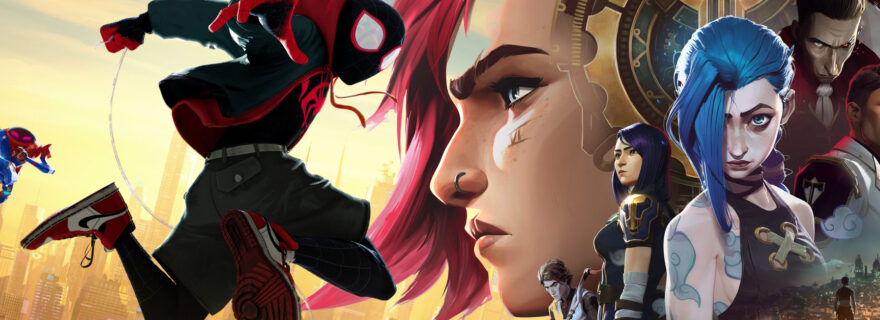
0 Comments